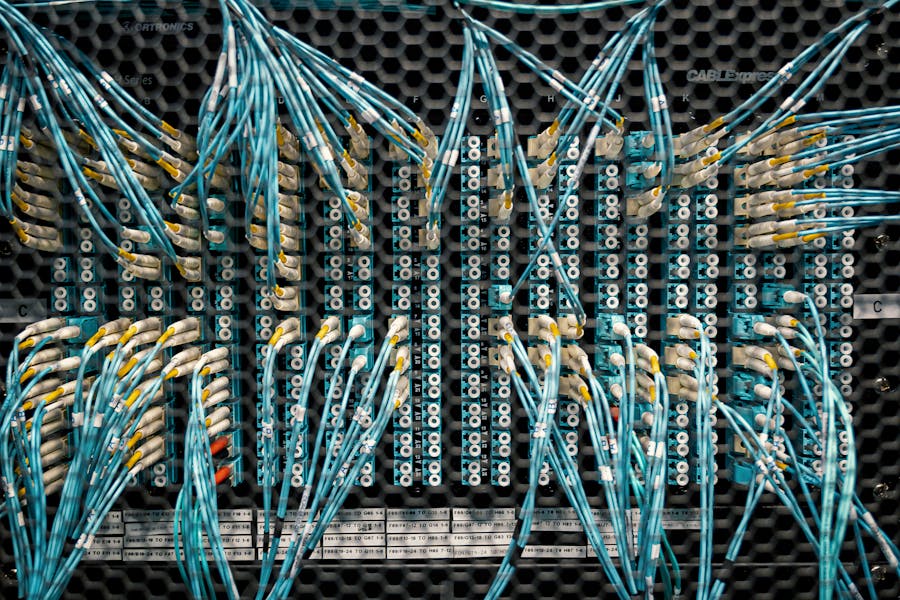
In an age where we rely on multiple devices to stay connected, it’s common to ask: Do different devices have different IP addresses? From smartphones and tablets to smart TVs and laptops, each device plays a unique role in the network, but how are they identified?
Every device needs an IP (Internet Protocol) address to communicate over a network, much like every home needs a unique address to receive mail. These digital addresses allow data to travel to the correct destination. While devices may appear to share the same connection, their IP addresses—public, private, or dynamic—can differ significantly depending on how the network is configured.
So, do all devices have different IP addresses on the same Wi-Fi? The answer depends on several factors, including whether the IP is assigned via DHCP, if Network Address Translation (NAT) is used, and whether the IP is static or dynamic.
This article explores the complex but fascinating world of IP assignments. It reveals why knowing if devices have different IP addresses matters for your security, privacy, and overall network performance. Let’s dive in and make sense of how the internet recognizes your devices.
Do Different Devices Have Different IP Addresses?
Yes, different devices typically have different IP addresses. On a local network, each device is assigned a unique private IP, and when accessing the internet, they may share a public IP via the router’s NAT feature. However, each device must have its unique IP for identification and communication within a network.
How Private and Public IPs Work Together for Multiple Devices
When you ask, “Do different devices have different IP addresses?” the answer is yes, but understanding how and why requires a deeper look at network architecture. Each device on a local network—be it a laptop, smartphone, printer, or smart TV—needs its own unique identifier to communicate effectively. That identifier is the IP address, which ensures that data sent across the network reaches the correct destination.
Inside a local network (LAN), the router assigns devices private IP addresses using DHCP (Dynamic Host Configuration Protocol). These IPs are exclusive within the network and allow devices to communicate internally. However, for external communication, like browsing websites or streaming content, all devices typically share a single public IP address provided by the Internet Service Provider (ISP).
This is where Network Address Translation (NAT) becomes critical. NAT helps match internal private IPs with external public IPs to maintain seamless communication with the wider internet. In more complex setups, some devices may use static IP addresses for reliability, while others rely on dynamic IPs that may change over time. In short, yes—each device has a unique IP internally, with possible variations in public IP depending on network configuration.
How Do Devices Get Different IP Addresses?
Understanding how devices receive different IP addresses is essential to grasp how networks manage connections, avoid conflicts, and ensure smooth communication.
Dynamic Host Configuration Protocol (DHCP)
The most common method by which devices receive different IP addresses is through DHCP. When a device connects to a network, the router assigns it a unique private IP address from a predefined pool. This automatic system eliminates manual configuration, reduces errors, and streamlines connectivity for laptops, smartphones, and tablets.
Static IP Address Configuration
While DHCP is dynamic, some devices benefit from a permanent IP address. Servers, printers, security systems, or devices requiring stable remote access often use static IPs. These are manually assigned by network administrators, ensuring that the IP never changes, which simplifies network mapping and long-term accessibility.
Public and Private IP Address Allocation
Devices don’t all get a public IP address. Instead, most are given private IPs by the router for internal communication. The router holds a public IP, provided by the Internet Service Provider (ISP). This distinction between public and private IPs ensures security and efficient routing.
Role of Network Address Translation (NAT)
Routers use NAT to bridge the gap between private and public IPs. This allows multiple devices to access the Internet using one public IP. NAT tracks which internal device made which request and ensures the response goes to the correct destination inside the local network.
MAC Address and IP Reservation
Routers can also assign consistent IP addresses to specific devices using their MAC (Media Access Control) addresses. This method is useful for ensuring that certain devices always get the same IP address from the DHCP server without manually setting a static IP.
Reasons Why Different Devices Have Different IP Addresses
In every home or business network, devices must be easily identifiable to operate smoothly. That’s where IP addresses come in. Assigning different IPs to each device ensures proper routing, communication, and security. Below are the key reasons why this is essential:
- Network Organization: Each device needs a unique IP address so routers can accurately direct traffic. Without this, data could be lost or misrouted.
- Device Communication: On a local network, devices like phones, laptops, and smart TVs require individual private IPs to exchange information correctly.
- Security Management: Unique IP addresses enable firewalls and network systems to apply customized security settings for each device, improving protection.
- Resource Control: Network administrators can monitor data usage, manage device access, and enforce restrictions based on IP-specific settings.
- Conflict Prevention: Different IPs help prevent address conflicts and ensure that no two devices attempt to use the same address simultaneously.
Without unique IP addresses, your digital life would be full of glitches—data might end up in the wrong place or never arrive.
Can Different Devices Have the Same IP Address? Here’s How
Yes, devices can share the same IP address under certain conditions—but with important distinctions. Most commonly, multiple devices on the same local network appear to share one public IP address when connected through a router using Network Address Translation (NAT). This is how your smartphone, laptop, smart TV, and other gadgets can all access the internet while seemingly having a single IP address. Behind the scenes, each device is assigned a unique private IP address by the router via DHCP, enabling local communication.
However, problems can occur when two devices on the same network accidentally receive the same private IP, usually due to manual configuration errors or DHCP issues. This causes IP conflicts, resulting in connection loss or unstable performance. Understanding the difference between public and private IP addresses—and how NAT works—is essential to avoid these issues and maintain a smooth, secure network environment.
Do Different Devices on the Same Wi-Fi Have Different IP Addresses?
Many users assume every device online has its own unique address, but things get interesting when multiple devices connect to the same Wi-Fi. Let’s break down how IP addresses the router assigns each one a unique private IP address work in shared network environments.
- Local IP Allocation: When devices like smartphones, laptops, or smart TVs connect to the same Wi-Fi, the router assigns each one a unique private IP address using DHCP (Dynamic Host Configuration Protocol). This helps avoid IP conflicts and ensures smooth communication between devices within the network.
- Same Public IP Visibility: Although devices have different private IPs internally, they typically share the same public IP address externally. This is because the router represents the entire local network to the internet using a single public IP provided by the ISP.
- Device Identification via IP: Internally, the router tracks which device uses private IPs. This allows accurate data routing despite all devices appearing under one public IP online.
- Role of Network Configuration: Advanced network setups, especially in business environments, might segment devices using VLANs or subnets, creating unique IP groupings for better control.
- Practical Scenarios: For example, your phone and laptop at home will have different private IPs but appear to external websites under the same public IP.
In Closing
So, do different devices have different IP addresses? Yes—and for excellent reasons. Every device needs an IP to function on a network. Whether it’s to route data properly, ensure security, or allocate bandwidth, different IPs help maintain order and efficiency. Devices may share a public IP through NAT, but locally, they are always assigned unique private IPs.
As networks become more intelligent and secure, understanding how IP addresses work across different devices is no longer just for IT pros—it’s essential knowledge for everyone connected.
FAQ’s
Do phones and laptops have different IP addresses on the same Wi-Fi?
Yes, each device connected to the same Wi-Fi network receives a unique private IP address from the router to ensure smooth internal communication and prevent conflicts.
Can two devices ever have the same IP address?
Yes, but it’s usually a misconfiguration or error. If not managed by NAT or proxy, it can cause network instability, connection drops, or IP conflict warnings.
How does a router assign different IP addresses?
Routers typically use DHCP (Dynamic Host Configuration Protocol) to automatically assign a unique private IP address to each connected device for proper data routing.
Why is it essential that devices have different IPs?
Having separate IP addresses helps prevent data from going to the wrong device, allows better traffic control, and enhances overall network security and performance.
Are IP addresses permanent for devices?
Not always. Most devices receive dynamic IPs that can change over time, although static IPs can be manually assigned for consistency and specific use cases.






